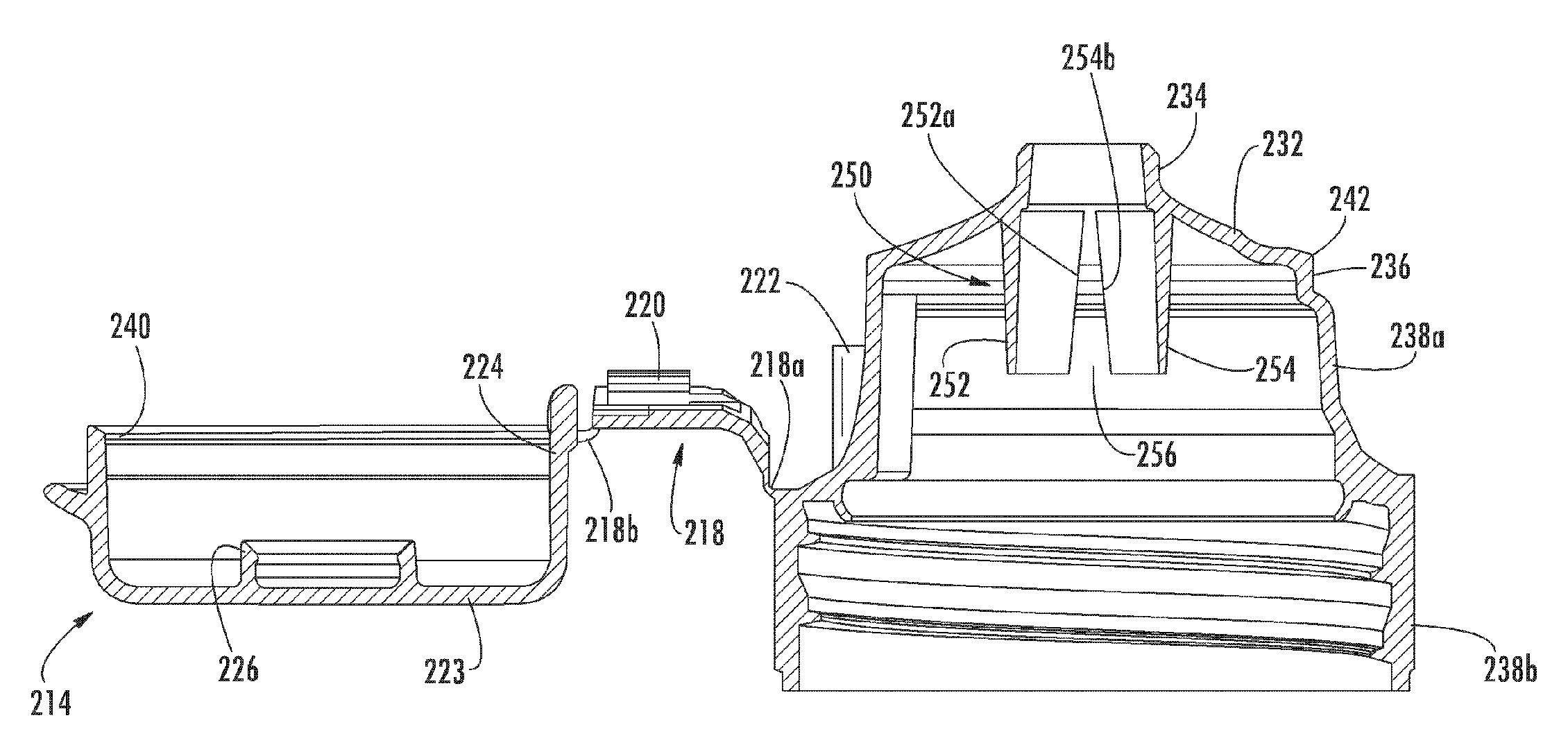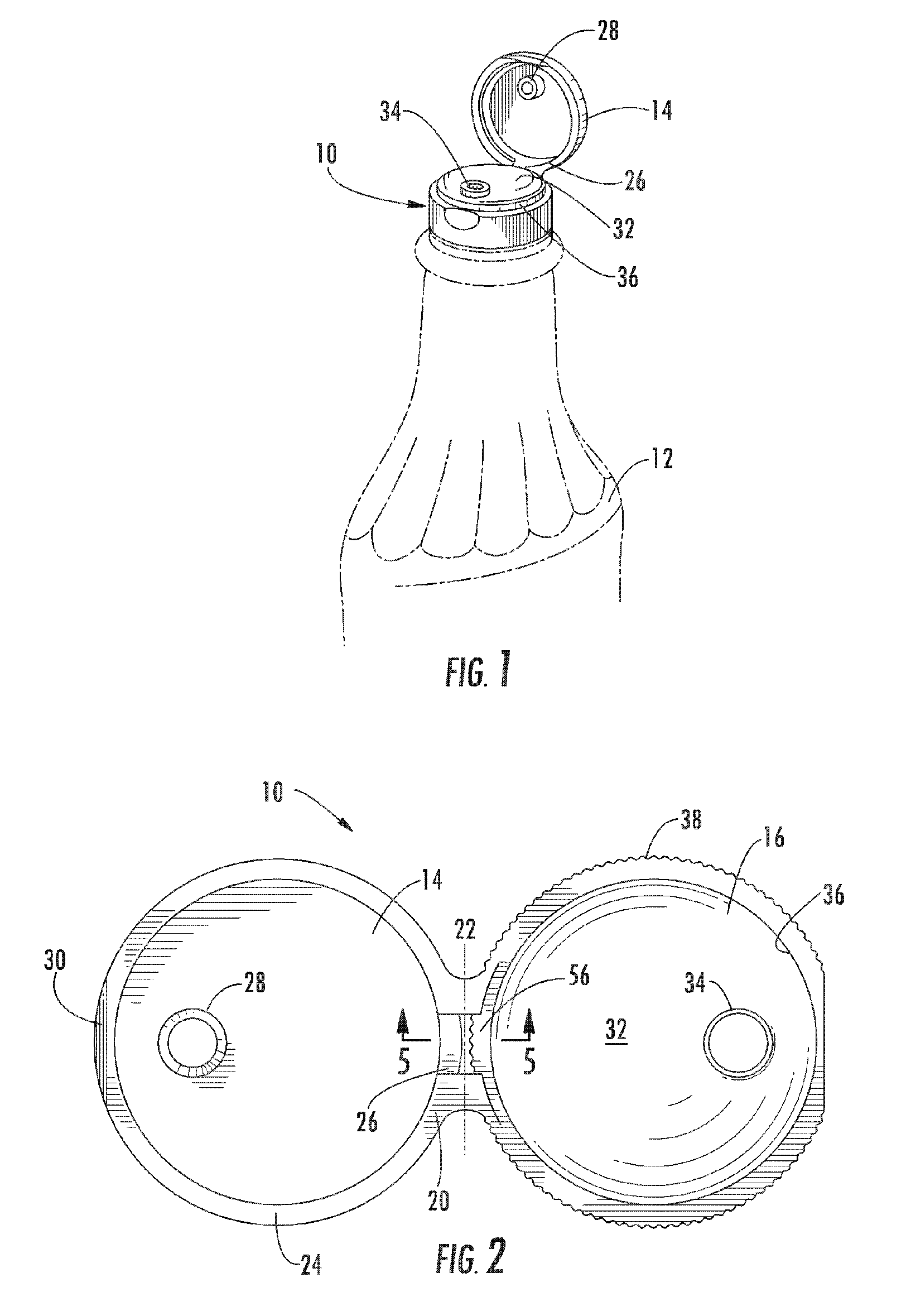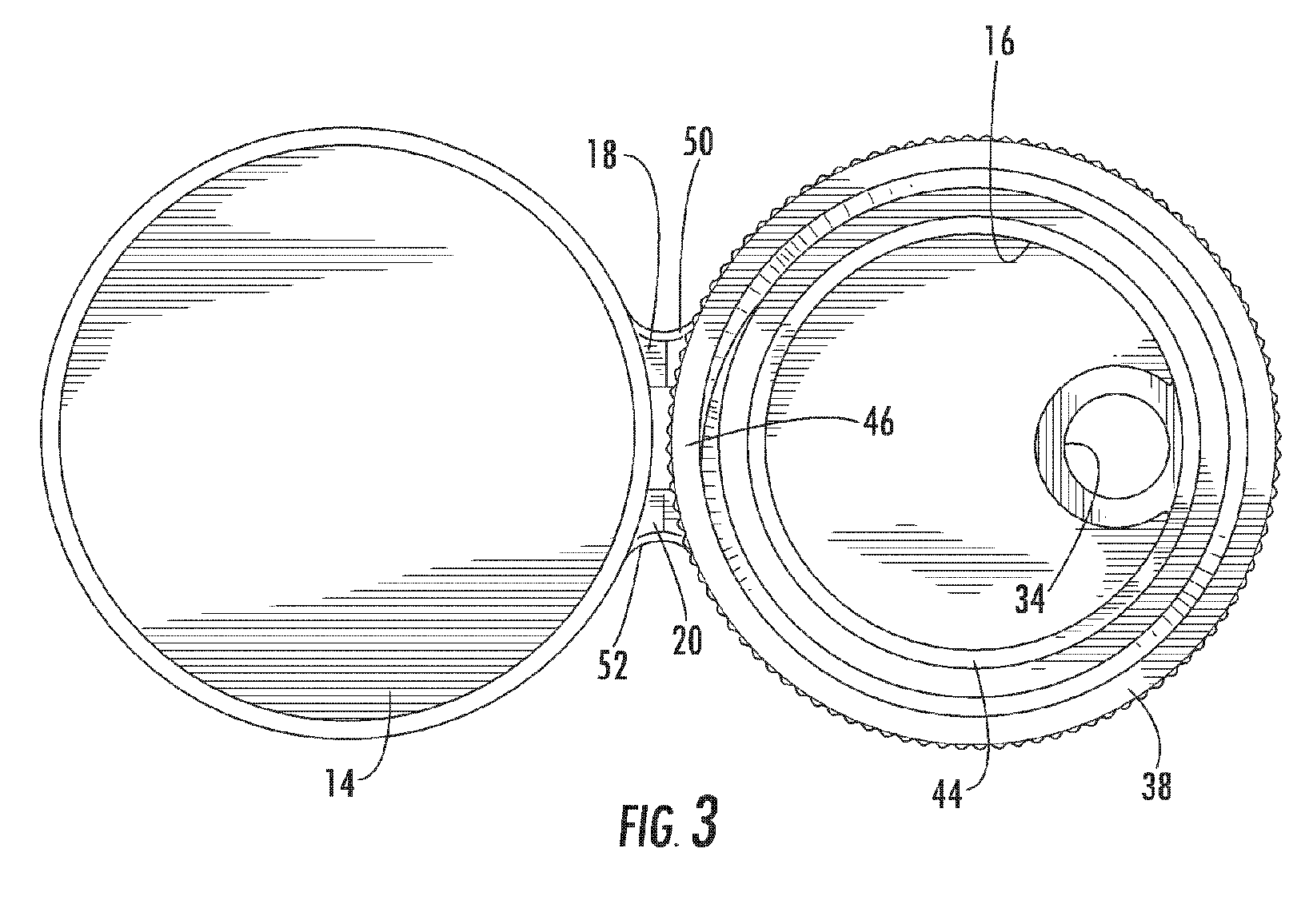Dispensing closure having flow modulator and syneresis capture
a technology of flow modulator and closure, applied in the direction of closure using stoppers, liquid handling, caps, etc., can solve the problems of increased residue inside the cap, weak seal, and residue left behind, so as to prevent the formation of a meniscus and minimize any spattering. the effect of the tendon
- Summary
- Abstract
- Description
- Claims
- Application Information
AI Technical Summary
Benefits of technology
Problems solved by technology
Method used
Image
Examples
Embodiment Construction
[0050]Referring now to the drawings, FIG. 1 depicts a first embodiment of a dispensing closure constructed in accordance with the principles of the invention. The dispensing closure is generally identified at 10, and is shown secured to the upper end of the neck of container 12. Container 12 may assume the form of a plastic bottle, which may be tilted, and squeezed, to discharge its contents through closure 10.
[0051]FIG. 2 shows dispensing closure 10 in its as-molded condition, prior to its securement to container 12. Closure 10 comprises sealing cap 14, a closure body 16, and a pair of hinges 18, 20 that join the sealing cap to the closure body. Sealing cap 14 is pivoted along the center line 22 of the hinges relative to closure body 16.
[0052]Sealing cap 14, as shown in FIGS. 2 and 3, includes an annular flange 24, a camming lug 26 located on flange 24 in proximity to closure body 16, and a depending peg 28. Camming lug 26 is curved, when viewed from above, and follows the contour ...
PUM
 Login to View More
Login to View More Abstract
Description
Claims
Application Information
 Login to View More
Login to View More - R&D
- Intellectual Property
- Life Sciences
- Materials
- Tech Scout
- Unparalleled Data Quality
- Higher Quality Content
- 60% Fewer Hallucinations
Browse by: Latest US Patents, China's latest patents, Technical Efficacy Thesaurus, Application Domain, Technology Topic, Popular Technical Reports.
© 2025 PatSnap. All rights reserved.Legal|Privacy policy|Modern Slavery Act Transparency Statement|Sitemap|About US| Contact US: help@patsnap.com



